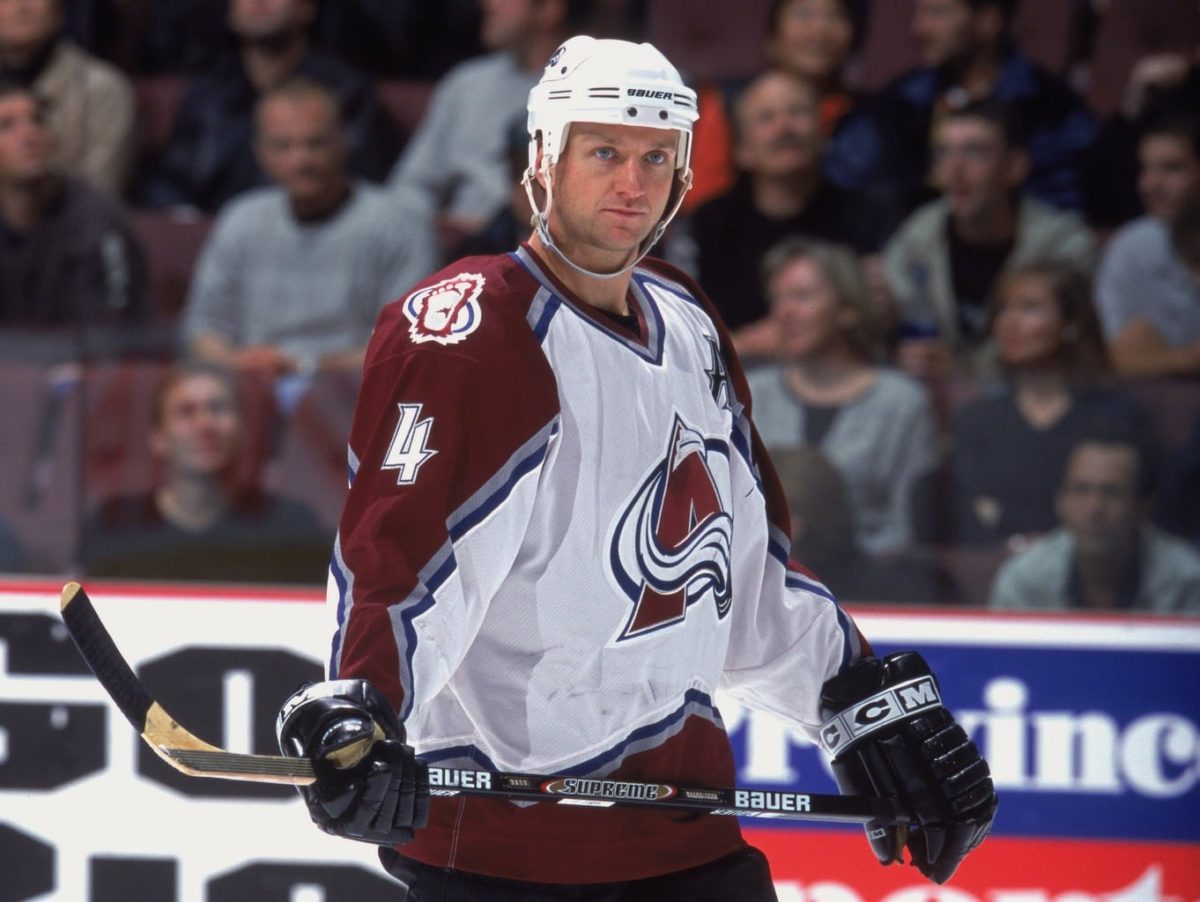The trade deadline is supposed to be the point in the NHL season when buyers and sellers officially separate themselves. Teams are forced to make a call about whether to make a playoff push or shift their focus to accumulating assets and upping their draft lottery odds.
Sign up for our NHL Prospects & Draft Substack newsletter
Sometimes, though, teams’ actions and results don’t correlate. Typically, this happens for buyers who bring in players who either don’t fit in as expected or who don’t produce enough to move the needle, ultimately contributing to the team failing to make the playoffs. Occasionally, however, a team that subtracts at the deadline doesn’t slow down and finds itself in playoff position when the dust settles.
But what would cause a team with a chance of reaching the playoffs to remove talent from its roster? And is that something we could see again in 2024? Looking at some historical examples and the states of the most compelling sellers at this year’s trade deadline should answer both questions.
Case Study No. 1: 2016-17 St. Louis Blues
The Team: The St. Louis Blues had made the playoffs each of the prior five seasons and were coming off their first Western Conference Final appearance since 2001. But they were having a decidedly mediocre 2016-17 season, sitting one point outside of a playoff spot on March 2 with a 31-26-5 record and minus-six goal differential.
The Player: Kevin Shattenkirk had been a key piece of the Blues’ blue line since coming over as part of the Erik Johnson trade in 2011. He was enjoying a career season, one that would see him put up a career-high 54 points. But with Alex Pietrangelo entrenched on the team’s top pair and Colton Parayko emerging as a top-four caliber young player, Shattenkirk was excess goods — and, more importantly, set to become an unrestricted free agent.
The Trade: The Blues traded Shattenkirk and then-prospect goaltender Pheonix Copley to the Washington Capitals, who were en route to a second straight President’s Trophy but still without a conference finals trip in the Alexander Ovechkin era at this point. Washington sent its first-round pick, forward prospect Zack Sanford, and journeyman Brad Malone the other way. There were a couple of conditional picks included in the fine print, including the potential for the Blues to receive a second-round pick if the Capitals finally reached the third round, but ultimately the Blues only wound up with the aforementioned three assets.

The Playoff Run: The Capitals won seven playoff games in 2017, one more than they had a season before and one more than the Blues won in 2017. St. Louis finished the season on a 15-3-2 run, moving up to third in the Central Division. As if that wasn’t impressive enough, they took down a historically-dominant possession team in the 106-point Minnesota Wild in a five-game first-round series. Goaltender Jake Allen went on the heater of all heaters, recording a .956 save percentage in the series.
The Blues had an opportunity to go back to the Western Conference Final, as they seemingly lucked out by avoiding a matchup with the 109-point Chicago Blackhawks when the Nashville Predators pulled a first-round upset of their own. Despite having home-ice advantage, the Blues fell behind 3-1 in the series and ultimately fell in six games. Offense was their main problem, as the team tallied just 11 goals in the series against as Allen was outdueled by an even-hotter Pekka Rinne.
The End Result: The Blues didn’t use that first-round pick, instead flipping it with their own first-rounder to acquire Brayden Schenn from the Philadelphia Flyers on the draft floor (Philly used the pick, No. 27 overall, on Morgan Frost). Schenn and Sanford both played regular roles in the team’s 2019 Stanley Cup championship, with each scoring in their 4-1 win in Game 7 of the Finals. Shattenkirk struggled to fit in with the Capitals, although he did score a playoff overtime winner, and Washington wound up getting a Cup of its own in 2018. While Shattenkirk could’ve helped the team in that 2017 run, this had a happy ending for the Blues.
Case Study No. 2: 2014-15 Calgary Flames
The Team: The Calgary Flames hadn’t won a playoff series since reaching the 2004 Stanley Cup Final and had been on the outside of the playoffs looking in for five-straight seasons. They were showing signs of snapping out of that funk in 2014-15, with young talents such as Johnny Gaudreau and Sean Monahan leading the team to a resurgent season. At the start of March, the Flames were tied for the third spot in the Pacific Division with the Los Angeles Kings, although both teams were a few points back of the wild-card picture.
The Player: Curtis Glencross was a veteran forward and member of the Flames since 2008. He was a solid middle-six talent at his peak, putting up three 40-point seasons, and he was scoring at a 43-point pace this season. Glencross was starting to get up there a bit in age and was set to hit unrestricted free agency at the end of the season.
The Trade: The Capitals were bouncing back nicely from their first playoff miss since Ovechkin’s rookie season, en route to a 101-point campaign. However, they were looking for some extra punch to their forward core. Even though Glencross had a no-move clause on his contract, he accepted a move to Washington with the Flames netting a second and third-round pick in return.

The Playoff Run: A 12-5-3 finish to the regular season was enough for Calgary to secure the third spot in the Pacific and a first-round matchup with the aging Vancouver Canucks. The Flames kindly ushered their Western Canadian rivals into a multi-year spiral with a six-game series win, capped off by a memorable comeback from 3-0 down on home ice in Game 6.
The second round presented a nightmare matchup with the Anaheim Ducks, a team that was both stacked and amid a dominant stretch over the Flames when the teams played in Anaheim. That continued as the Ducks won all three games of the series at the Honda Center, with Calgary able to claw out an overtime comeback win in Game 3 but unable to manage anything more against the number-one seed in the Western Conference.
The End Result: Glencross only played in 10 of Washington’s 14 playoff games. He nearly scored the goal that sent the Capitals to their first Eastern Conference Final since 1998, but the 1-0 lead he staked the team to in Game 5 slipped away in the final two minutes as the New York Rangers slowly overpowered them en route to a dramatic series victory.
The Flames didn’t use either of the picks they acquired for him, but they certainly got a lot of value from them. The second-rounder was moved along with their first and second to the Boston Bruins for Dougie Hamilton. The third-rounder checked in at No. 83 overall, which the Flames moved with their own third (pick No. 76) to acquire pick No. 60 from the Arizona Coyotes, which Calgary used on Oliver Kylington.
The picks acquired for Glencross turned into Jérémy Lauzon and Jens Looke, so there’s not too much regret there. The other third-round pick moved in the Kylington trade was used to select Adin Hill, which stings a lot more than it would have a year ago, although that’s fair given Boston largely whiffed on the other picks in the Hamilton trade, both of which were in the top 50 of the stacked 2015 draft. Still, the Flames weren’t ready for a deep playoff run in 2015, and given Glencross’ struggles in Washington (and the fact he didn’t play in the NHL after that season), it’s unlikely he would’ve made a difference against the Ducks.
Case Study No. 3: 2000-01 Los Angeles Kings
The Team: On Feb. 24, 2001, the Kings were 10th in the Western Conference, six points behind the Edmonton Oilers for a playoff spot (albeit with two games in hand). They had made just two playoff appearances since reaching the 1993 Stanley Cup Final, both ending in first-round exits and hadn’t won 40 games in a season since 1991. Even in a pre-salary cap world, the mushy middle is never a good place to be, and it was time for the Kings to pick a direction.
The Player: It would be hard for the Kings to make a bigger splash than by moving Rob Blake. He was the team’s captain, a King for life to that point after being drafted by the team in 1988, had played more than 600 games across a dozen seasons, and won a Norris Trophy in 1997-98. But he was also looking for a big payday in free agency (again, this was still a few years before the salary cap was introduced) and was entering his 30s. (from ‘Blake Traded to Avalanche,’ Los Angeles Times, Feb. 22, 2001)
The Trade: Despite saying he wanted to keep Blake, general manager Dave Taylor sent him to the Colorado Avalanche alongside Steven Reinprecht for a first-round pick, Adam Deadmarsh, and Aaron Miller. It was the last Blake would be heard of in Los Angeles… for about two months.

The Playoff Run: After trading Blake, the Kings went 13-2-5, putting them just two points clear of the cut-line to make the playoffs. Los Angeles upset the 111-point Detroit Red Wings in the opening round, with none other than Deadmarsh scoring the overtime winner to end the series in Game 6 after he tied the game in the third period.
That lead to a second-round matchup with a familiar face — Blake and the Avalanche. The Kings rallied from a 3-1 series deficit to force a Game 7, but Colorado comfortably won that by a 5-1 final. You’ll never guess who scored the first goal (and was on the ice for two other Avalanche goals).
The End Result: A happy one for Blake and the Avalanche, who won the Stanley Cup in epic fashion that season. Blake stayed in Colorado for four more seasons, receiving Norris votes in each of them, and establishing himself as a legendary Avalanche player. He would then return to the Kings, first as a player for two seasons, then as part of the front office since 2013, earning a promotion to general manager in 2017.
LA used the first-round pick on Dave Steckel, a nine-year veteran who never played a game for the team and who peaked as a bottom-six center. Miller had an excellent first full season with the Kings, earning votes for the full-season all-star team in 2001-02. But he missed at least 25 games each of the next three seasons and left Los Angeles a year later. Deadmarsh’s Kings career followed a similar trajectory — he scored a career-high 62 points in 2001-02 but played just 20 games the next season, his last in the NHL due to concussions. Of these three deals, this is the one the seller would like to undo the most.
Looking Ahead: Could a Team Join This List in 2023-24?
There are a few teams in the Western Conference who aren’t out of the playoff picture yet. The Wild, Seattle Kraken, and Flames are within single-digit points of a playoff spot. But given that spot is held by the universal champion of the deadline Vegas Golden Knights (and that the St. Louis Blues, who stood pat, are also in the mix), it’s unlikely any of them will make a push. The Capitals, New Jersey Devils, and Pittsburgh Penguins are slightly closer, with Washington particularly intriguing as they sit within three points of a playoff spot.
But there’s one seller who would be in the playoffs if the season ended today — the Flyers. The team stayed on its rebuilding course by dealing Sean Walker to the Colorado Avalanche to add a 2025 first-round pick. The Flyers did also add Erik Johnson for a fourth-round pick to soften the blow, but they were clearly sellers (same for New Jersey, who did move out Tyler Toffoli and Vitek Vanecek but added a new goalie tandem of Allen and Kaapo Kähkönen).
Related: NHL 2023-24 Power Rankings: Week 23
It will be an uphill road for Philadelphia, though. Their schedule for the rest of March is an absolute gauntlet and the team is quite banged up on defense. However, history shows they’ve got a good chance of winning their first-round series if they can find their way into the playoffs. That’s a nice prize for joining the intriguing-but-rare group of NHL teams to reach the playoffs after selling at that year’s trade deadline.
